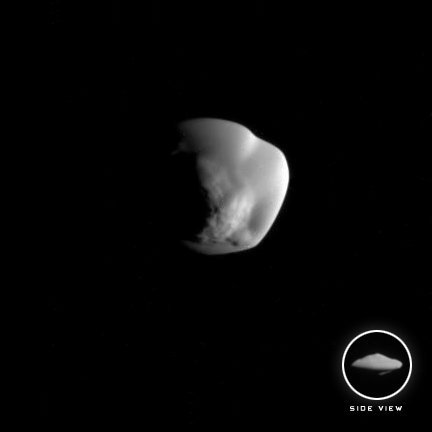
I tend to not get many of the small bodies in here simply due to the fact that they tend to not be geologically active, are grey in color and lack the grandeur of size. But here is a tiny moon that orbits just outside Saturn’s A-ring and is only about 40 by 20 kilometers in size. What makes this tiny body notable to me, is its shape which many assume is due to the collection of ring particles upon its surface.
As the rings of Saturn are so very flat, the materials all appear to have collected all along Atlas’s equator and as this material piles up it elongates the shape of the moon. This has erased any craters that may have existed on the tiny moon and created one of the Solar System’s more unusual surface features. The piled up equator of Atlas looks more like it is covered with snow and has ultimately given us our first naturally formed flying saucer (see inset side view). You can almost see the truly original form of Atlas somewhere in the middle hidden by the massive amounts of “ring-fall” over its many ages.